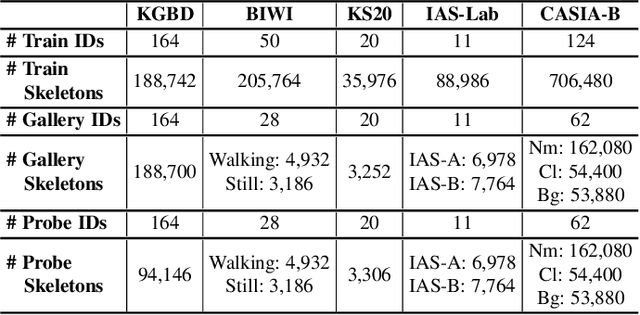Skeleton Prototype Contrastive Learning with Multi-Level Graph Relation Modeling for Unsupervised Person Re-Identification
Paper and Code
Aug 25, 2022



Person re-identification (re-ID) via 3D skeletons is an important emerging topic with many merits. Existing solutions rarely explore valuable body-component relations in skeletal structure or motion, and they typically lack the ability to learn general representations with unlabeled skeleton data for person re-ID. This paper proposes a generic unsupervised Skeleton Prototype Contrastive learning paradigm with Multi-level Graph Relation learning (SPC-MGR) to learn effective representations from unlabeled skeletons to perform person re-ID. Specifically, we first construct unified multi-level skeleton graphs to fully model body structure within skeletons. Then we propose a multi-head structural relation layer to comprehensively capture relations of physically-connected body-component nodes in graphs. A full-level collaborative relation layer is exploited to infer collaboration between motion-related body parts at various levels, so as to capture rich body features and recognizable walking patterns. Lastly, we propose a skeleton prototype contrastive learning scheme that clusters feature-correlative instances of unlabeled graph representations and contrasts their inherent similarity with representative skeleton features ("skeleton prototypes") to learn discriminative skeleton representations for person re-ID. Empirical evaluations show that SPC-MGR significantly outperforms several state-of-the-art skeleton-based methods, and it also achieves highly competitive person re-ID performance for more general scenarios.
 Add to Chrome
Add to Chrome Add to Firefox
Add to Firefox Add to Edge
Add to Edge